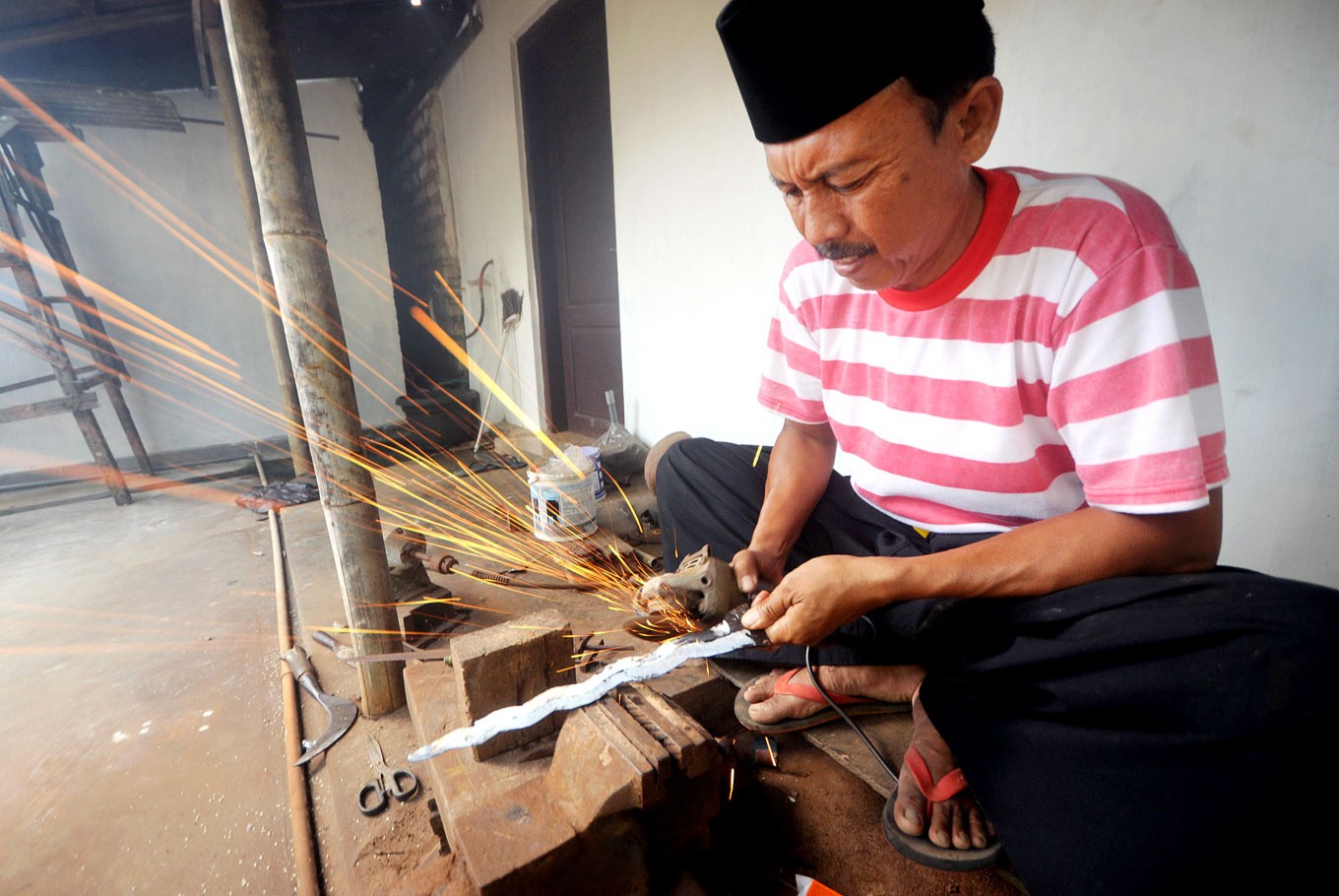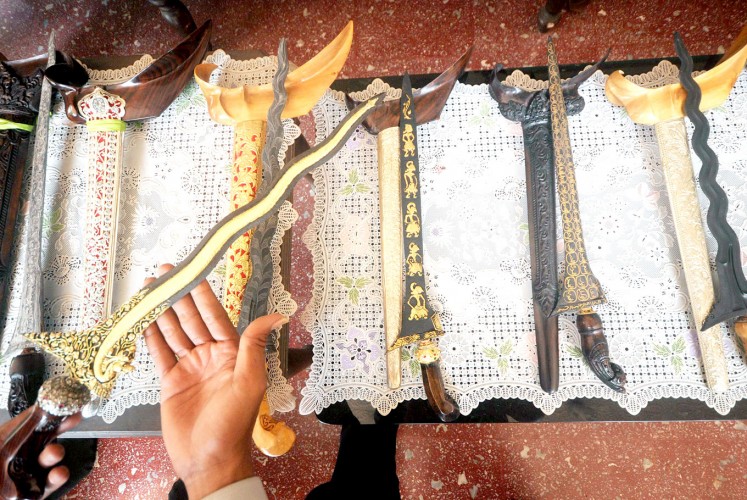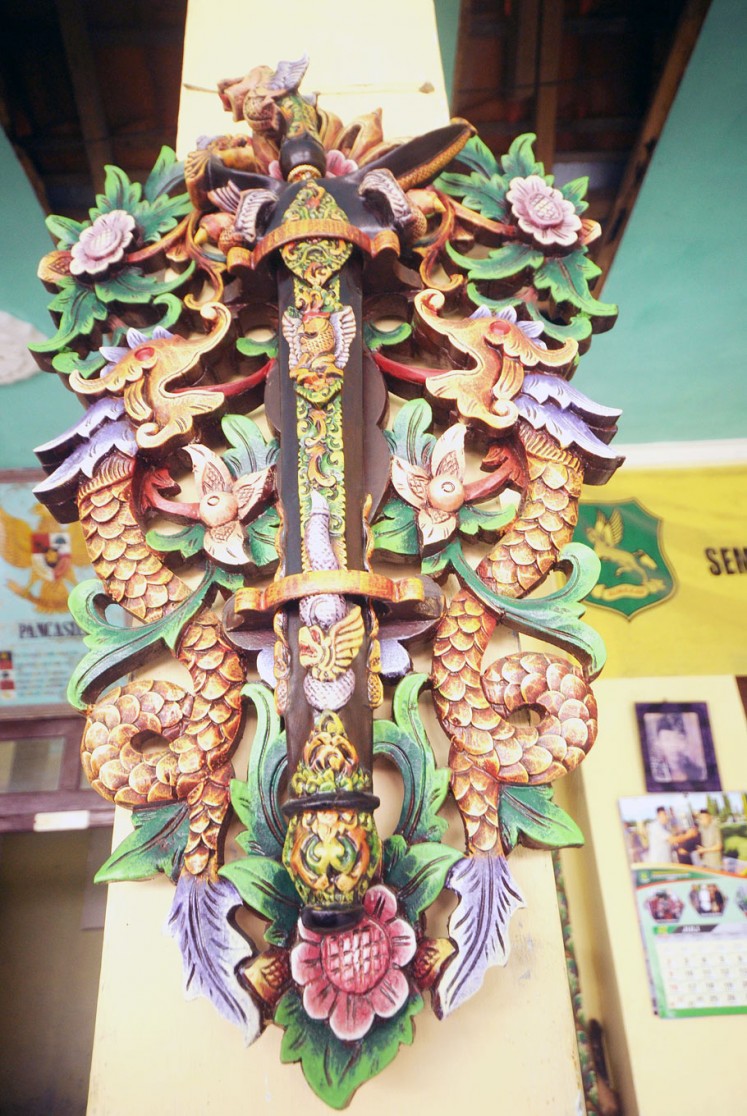Popular Reads
Top Results
Can't find what you're looking for?
View all search resultsPopular Reads
Top Results
Can't find what you're looking for?
View all search resultsVillage's blade-making skills go global
Sumenep kings relied on the people of Aeng Tong-Tong for the creation of their royal kris treasures
Change text size
Gift Premium Articles
to Anyone
T
he mythical weapon kris is generally associated with Central Java, but the center of kris craftsmen turns out to be in the eastern corner of Java, particularly in Sumenep, Madura.
Aeng Tong-Tong is a village in Saronggi district, located about 30 kilometers northwest of the city of Sumenep. This village is teeming with kris makers busily forging the traditional daggers.
Sanamo, 48, an mpu or kris master craftsman, specializing in family heirloom blades in the village, said Aeng Tong-Tong’s kris-making center originated when a local prince named Bukabu served as a guru for Sumenep kings.
“He taught religion, royal formality and arts, particularly kris making,”Sanamo said.
He added that Sumenep kings relied on the people of Aeng Tong-Tong for the creation of their royal kris treasures and the craftsmanship has since been preserved through generations by local villagers. Sanamo is a third generation mpu.
He said local craftsmen originally only produced the kris for their own families and the royal family.
As time went by, more and more people ordered kris blades for personal collections, thus prompting more villagers to learn the craft.
“But the presence of kris craftsmen here is also connected to the name Aeng Tong-Tong,” Sanamo said.
Finished products: Various examples of kris produced by kris makers of Aeng Tong-Tong are on display. (JP/Nedi Putra AW)Aeng Tong-Tong is derived from aeng and tong-tong, which respectively means water and container in Madurese.
The village name depicts the difficulty in finding water springs in this dry area, forcing residents to always carry containers to collect water from outer regions.
As farming is hard to do, kris making has become a primary source of income for most residents.
Almost 90 percent of the village’s 400 residents work as kris makers. Based on available data, Sumenep lists more than 640 kris craftsmen, which is believed to be the highest in Indonesia.
In Sanamo’s estimate, the village can produce hundreds of kris blades daily.
However, the large quantity produced are sold as souvenirs, while the ones ordered as special collections are limited in number because their crafting process may take a month to complete.
“Some heirloom kris blades are adorned with gold so that they are crafted in a special way, sometimes even preceded by a ritual with a lamb as an offering,” Sanamo said.
Moreover, the pamor (carvings) on these daggers are more intricate compared to those made only for decoration or gifts.
Some kris, like one owned by village head Taufik Rahman, have incredibly intricate carvings on the handle. (JP/Nedi Putra AW)Consequently, such valuable kris blades can cost tens of millions of rupiah compared to souvenir daggers, which is only worth hundreds of thousands of rupiah per piece.
So far, Aeng Tong-Tong has at least been capable of achieving its community empowerment based on local wisdom.
“Many local youth have finished their studies and they now feel their kris-making skills are sufficient,” Sanamo said.
While the regeneration of ancestral tradition has been progressing at a steady pace, Sanamo realized that young people should also consider completing their education.
“We’re trying to provide information and approach their parents in a persuasive and sustainable way,” he said.
Kris blades from the village are also marketed and sold online.
Sanamo referred to product placement on various social networks like Facebook and Twitter. As a result, the traditional weapons are now being sold customers in other countries as well.
Young blood: Many youths in the Aeng Tong-Tong village engage in kris-making. (JP/Nedi Putra AW)Yet, craftsmen still face obstacles when delivering the daggers due to license requirements.
Aeng Tong-Tong village head Taufik Rahman acknowledged the problem and hoped for a more effective legal classification so that the kris could be included in the heirloom category.
“The permits can only be obtained from the local police. We have tried to report the problem to the authorities ever since Susilo Bambang Yudoyono was president,”said Taufik, who has twice showcased his kris creations at cultural exhibitions in Holland.
Sinarto, the East Java Culture and Tourism Office’s secretary, said his agency was seeking to resolve the problem. “We’re planning to issue a regulation, at least at gubernatorial level, that makes kris products cultural treasures so that they can be safely delivered to other regions as well as other countries.”














